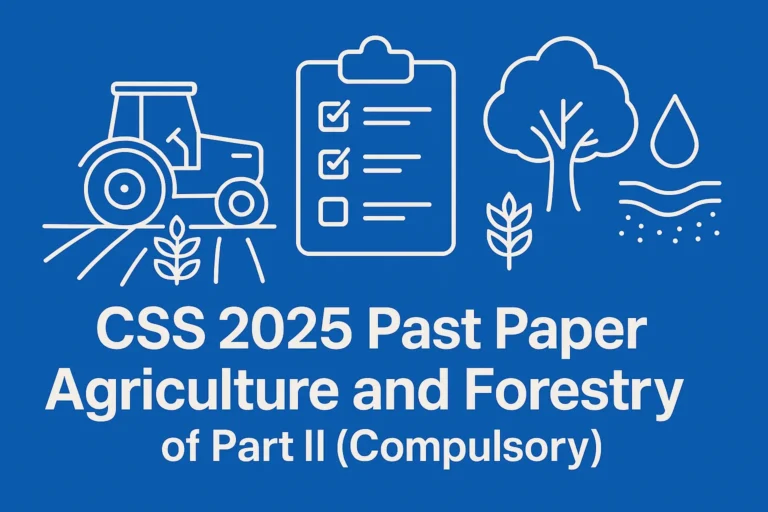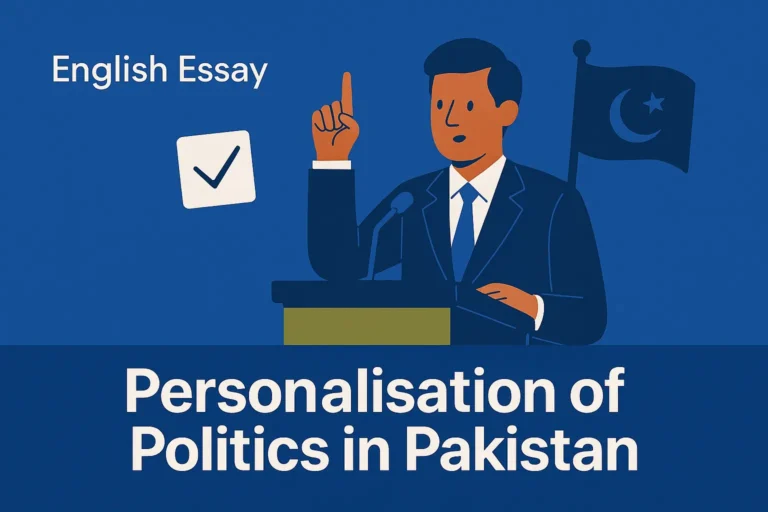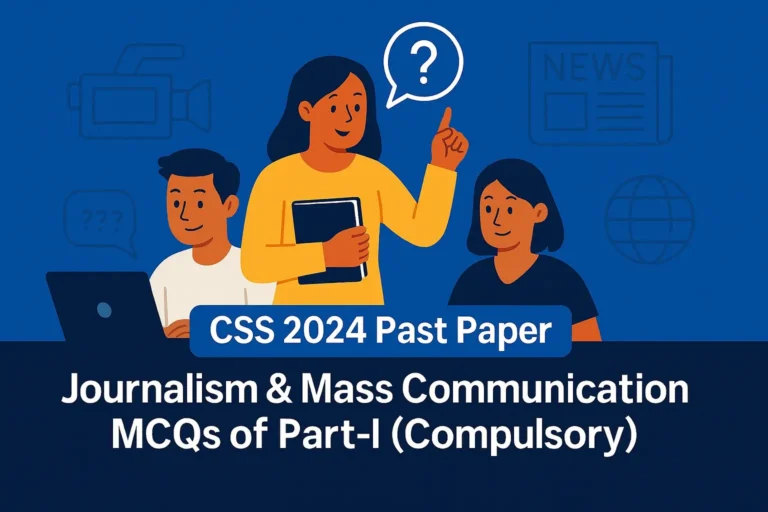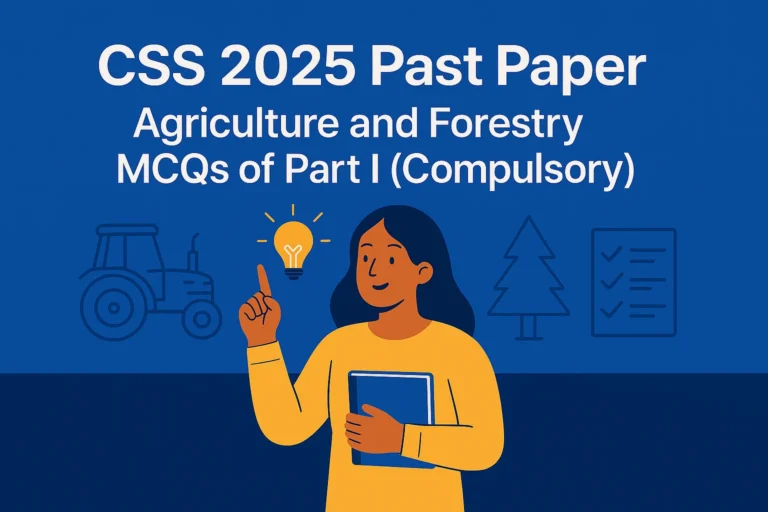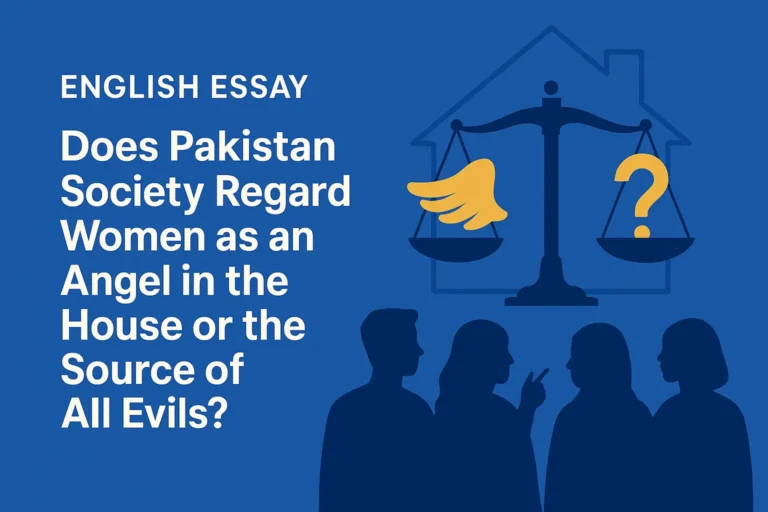CSS 2024 Solved Past Paper – Public Administration MCQs of Part-I (Compulsory)
Below are the solved multiple-choice questions (MCQs) of Part-I from the CSS 2024 Public Administration paper. Each question includes all the options, the correct answer is bolded, and a short explanation is provided for clarity.
1. With respect to one of the definitions, public administration as a field is mainly concerned with the means for:
(A) Implementing Political Values
(B) Maintaining Cultural Values
(C) Promoting Bureaucratic Governance
(D) None of these
💡 Public administration primarily concerns itself with implementing and sustaining bureaucratic governance mechanisms.
2. “New Public Management (NPM)” is a variant of public administration’s:
(A) Political Approach
(B) Managerial Approach
(C) Legal Approach
(D) None of these
💡 NPM belongs to the managerial approach, focusing on efficiency, decentralisation, and results.
3. Main structural elements of Max Weber’s concept of bureaucracy include:
(A) Hierarchy of Authority
(B) Career Structure through Specializations
(C) Both (A) & (B)
(D) None of these
💡 Weber emphasised hierarchy and specialisation as core traits of bureaucracy.
4. Stephen Robbins has classified organisational environment into:
(A) Trait, Behavioural and Contingency Theories
(B) Classical and Modern Approaches
(C) Political & Administrative Systems
(D) None of these
💡 Robbins explained organisational behaviour through trait, behavioural and contingency perspectives.
5. Maslow’s theory of human motivation or hierarchy of needs also includes:
(A) Self-actualization
(B) Self-esteem
(C) Both (A) & (B)
(D) None of these
💡 Maslow’s pyramid covers both esteem and self-actualisation as higher-level needs.
6. In pluralistic states, public administration is considered as representative of the competing:
(A) Bureaucratic and law & order groups
(B) Political and economic groups
(C) Social and economic groups
(D) None of these
💡 Public administration in pluralistic states balances diverse competing interests.
7. Recent literature on public administration in South Asian perspective highlights that main reason of rampant corruption in public offices of developing countries includes:
(A) Cultural Codes
(B) Balance Issues of Employees
(C) Low salaries compared to private sector
(D) None of these
💡 Weak institutional balance and accountability create fertile ground for corruption.
8. In South Asian context, administrative reforms concerning administrative structures and procedures are undertaken to improve governance under the demands of:
(A) Keeping in step with globalization
(B) Moving towards privatization and deregulation
(C) Both (A) & (B)
(D) None of these
💡 South Asian reforms aim at both globalization alignment and privatisation.
9. The ‘Civil Service’ structure, considered as backbone of public administration of Pakistan has been derived from:
(A) British India Corporate Services
(B) All India Muslims Civil Service
(C) Indian Civil Service
(D) None of these
💡 Pakistan’s civil service roots lie in British India’s administrative system.
10. In 1973 Constitution of Pakistan, the legislative lists dealing with all federation and provincial issues included:
(A) Federal Constitutional List
(B) Provincial Development Plans’ List
(C) Local Government List
(D) None of these
💡 The Federal Legislative List in 1973 Constitution governs federation–province matters.
11. As per constitutional provisions, appointment and removal of provincial governors in Pakistan rests with the:
(A) Provincial Governments
(B) Federal Government
(C) As per decision of Senate
(D) None of these
💡 The appointment/removal of provincial governors is the power of the President/Federal Govt.
12. The managerial approach to public administration promotes the organizations, essentially along the lines of:
(A) Adam Smith’s Productive Labour
(B) Frederick W. Taylor’s Scientific Management
(C) Max Weber’s Ideal Type of Bureaucracy
(D) None of these
💡 Managerial approach emphasises Taylor’s principles of efficiency and work-study.
13. The rationale for public administration to be an academic discipline and professional specialty was initially given by:
(A) Karl Heinrich Marx
(B) Woodrow Wilson
(C) Alfred Marshall
(D) None of these
💡 Woodrow Wilson’s 1887 essay marked Public Administration as a separate discipline.
14. The theory that highlights formal and informal governance structures within societies and examines individuals’ social processes is called:
(A) Institutional Theory of Governance
(B) Transitional Administration
(C) Comparative Administration
(D) None of these
💡 Institutional theory studies formal and informal governance structures shaping social behaviour.
15. Performance appraisal and periodic reports on the output of individuals and departments are part of the:
(A) Furtherance of administrative control
(B) Performance appraisal mechanisms
(C) Promotion and upgradation system
(D) None of these
💡 Performance appraisal links directly to promotion and upgrading in bureaucracy.
16. Under the Civil Servants Rules of 1973, appointments, promotions, and transfers of civil servants in Pakistan are based on:
(A) Education and qualifications
(B) Performance and annual reports
(C) Conduct, commitment and competence
(D) All of these
💡 Civil servants are judged holistically—education, ACRs, performance, conduct.
17. Rational model of decision-making suggests that the person who has to make an action will do so on the basis of his / her:
(A) Cultural codes
(B) Assessment of priorities
(C) Assessment of community needs
(D) Assessment of preferences
💡 Rational choice relies on weighing personal preferences and options logically.
18. Monetary policy involving use of credit, money supply to influence interest rates and money supply is prepared and implemented by:
(A) State-owned Commercial Banks
(B) Consumer Interest Groups
(C) Central or State Bank of the Country
(D) None of these
💡 Central Banks control monetary policy through money supply and interest rates.
19. An organization’s efficiency and effectiveness can be improved through the application of administrative principles falling under:
(A) Administrative Management Theory
(B) Bureaucratic Management Theory
(C) Scalar Chain Theory
(D) None of these
💡 Administrative Management stresses efficiency by applying universal principles of management.
20. Public-private partnership is a contractual arrangement between government and private sectors for the delivery of:
(A) Private services funded by public sector
(B) Public services financed by private sector
(C) Both (A) & (B)
(D) None of these
💡 PPP model ensures private financing of public service delivery.

